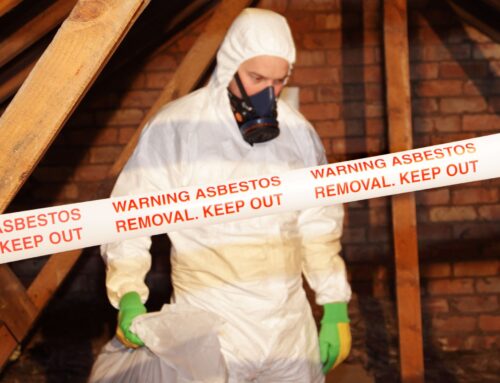Asbestos, a naturally occurring mineral once valued for its durability and heat resistance, was widely used in construction materials until the late 20th century. Many commercial buildings, particularly those built before the 1980s, still contain asbestos in materials such as insulation, roofing, flooring, and ceiling tiles.
While asbestos is harmless when intact, disturbances caused by renovations, repairs, or wear and tear can release its microscopic fibers into the air. When inhaled, these fibers can lead to serious health problems, including asbestosis, lung cancer, and mesothelioma.
Why Asbestos Abatement Is Essential In Commercial Buildings
Employee Health
Employees working in buildings with damaged asbestos are at risk of prolonged exposure, which can cause severe respiratory diseases. Asbestos-related illnesses often take years to develop, making prevention through abatement crucial.
Compliance With Regulations
The Occupational Safety and Health Administration (OSHA) and the Environmental Protection Agency (EPA) have strict regulations regarding asbestos in the workplace. Businesses must ensure their buildings are free from hazardous asbestos exposure to avoid legal consequences and fines.
Protect Your Commercial Investment
Failing to address asbestos issues can lead to significant financial and reputational losses. Buildings with unresolved asbestos problems may face devaluation, difficulty in attracting tenants or buyers, and costly lawsuits. Proactively investing in asbestos abatement not only protects the health of occupants but also preserves the value of your commercial property, making it a sound decision for long-term financial stability.
Identifying Asbestos In Commercial Buildings
Common Areas Containing Asbestos
- Insulation around pipes and boilers
- Vinyl floor tiles and adhesives
- Roofing shingles and felt
- Ceiling and wall tiles
- Cement used in siding and panels
Signs Of Asbestos Issues
- Crumbling or damaged materials in older buildings
- Dust accumulation around building materials
- Employee complaints about respiratory problems or unexplained health issues
If you suspect asbestos is present in your building, it’s essential to hire certified professionals to conduct a thorough inspection.
The Asbestos Abatement Process
Step 1: Inspection & Testing
A licensed asbestos inspector assesses the building to identify areas containing asbestos. Samples are taken and tested in a lab to confirm the presence of asbestos.
Step 2: Containment
The affected area is sealed off using barriers and negative air pressure to prevent asbestos fibers from spreading during removal.
Step 3: Removal Or Encapsulation
Depending on the situation, asbestos materials are either safely removed or encapsulated with a sealant to prevent fiber release.
Step 4: Cleanup & Disposal
The area is thoroughly cleaned using HEPA vacuum systems, and all asbestos waste is disposed of according to strict EPA guidelines.
Step 5: Clearance Testing
After abatement, the area is tested to ensure it is free from asbestos hazards before it is deemed safe for reoccupation.
Choose Rome Environmental For Commercial Asbestos Abatement In Northern Nevada
Asbestos in commercial buildings poses a significant risk to workplace safety. By investing in professional asbestos abatement, you protect your employees’ health, comply with regulations, and create a safer, more productive work environment. Rome Environmental specializes in asbestos abatement for commercial properties across Northern Nevada.
Our team of certified professionals uses advanced techniques and adheres to all regulatory standards to ensure safe and effective asbestos removal. We work discreetly and efficiently to minimize disruption to your business operations while prioritizing safety. Trust Rome Environmental to handle your asbestos abatement needs with expertise and care – get a free quote today!




